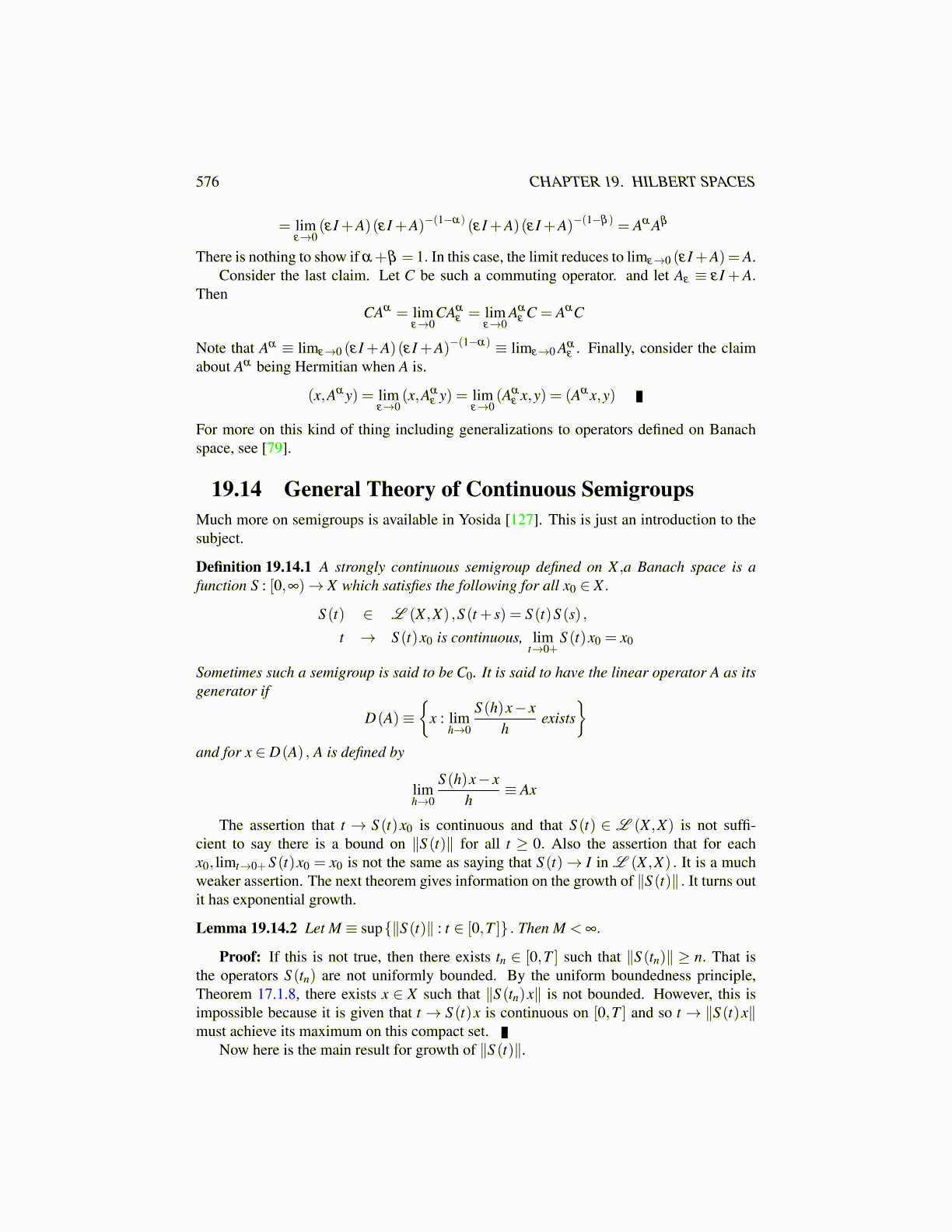
576 CHAPTER 19. HILBERT SPACES
= limε→0
(εI +A)(εI +A)−(1−α) (εI +A)(εI +A)−(1−β ) = Aα Aβ
There is nothing to show if α+β = 1. In this case, the limit reduces to limε→0 (εI +A) =A.Consider the last claim. Let C be such a commuting operator. and let Aε ≡ εI +A.
ThenCAα = lim
ε→0CAα
ε = limε→0
Aαε C = AαC
Note that Aα ≡ limε→0 (εI +A)(εI +A)−(1−α) ≡ limε→0 Aαε . Finally, consider the claim
about Aα being Hermitian when A is.
(x,Aα y) = limε→0
(x,Aαε y) = lim
ε→0(Aα
ε x,y) = (Aα x,y)
For more on this kind of thing including generalizations to operators defined on Banachspace, see [79].
19.14 General Theory of Continuous SemigroupsMuch more on semigroups is available in Yosida [127]. This is just an introduction to thesubject.
Definition 19.14.1 A strongly continuous semigroup defined on X ,a Banach space is afunction S : [0,∞)→ X which satisfies the following for all x0 ∈ X .
S (t) ∈ L (X ,X) ,S (t + s) = S (t)S (s) ,
t → S (t)x0 is continuous, limt→0+
S (t)x0 = x0
Sometimes such a semigroup is said to be C0. It is said to have the linear operator A as itsgenerator if
D(A)≡{
x : limh→0
S (h)x− xh
exists}
and for x ∈ D(A) , A is defined by
limh→0
S (h)x− xh
≡ Ax
The assertion that t → S (t)x0 is continuous and that S (t) ∈ L (X ,X) is not suffi-cient to say there is a bound on ∥S (t)∥ for all t ≥ 0. Also the assertion that for eachx0, limt→0+ S (t)x0 = x0 is not the same as saying that S (t)→ I in L (X ,X) . It is a muchweaker assertion. The next theorem gives information on the growth of ∥S (t)∥ . It turns outit has exponential growth.
Lemma 19.14.2 Let M ≡ sup{∥S (t)∥ : t ∈ [0,T ]} . Then M < ∞.
Proof: If this is not true, then there exists tn ∈ [0,T ] such that ∥S (tn)∥ ≥ n. That isthe operators S (tn) are not uniformly bounded. By the uniform boundedness principle,Theorem 17.1.8, there exists x ∈ X such that ∥S (tn)x∥ is not bounded. However, this isimpossible because it is given that t → S (t)x is continuous on [0,T ] and so t → ∥S (t)x∥must achieve its maximum on this compact set.
Now here is the main result for growth of ∥S (t)∥.